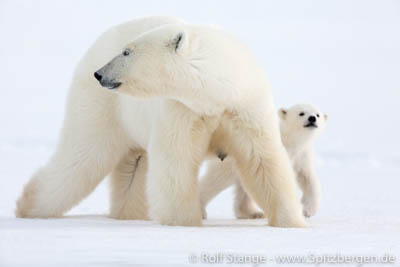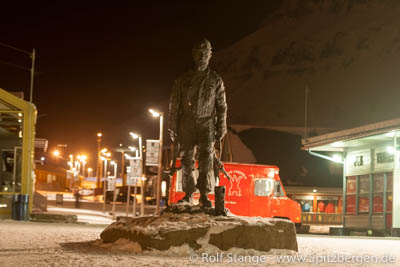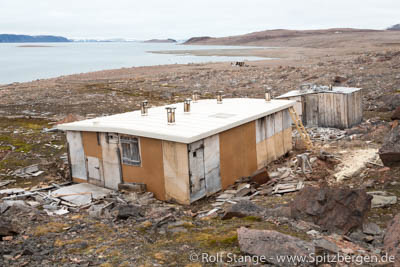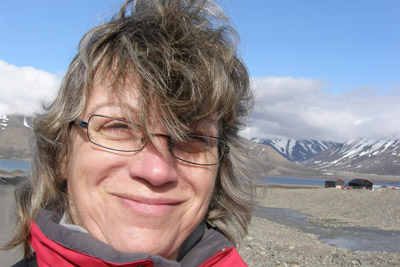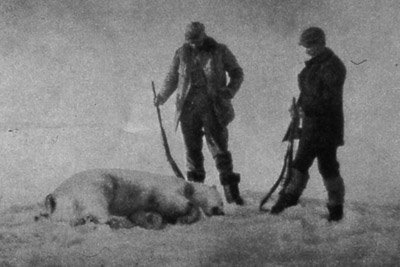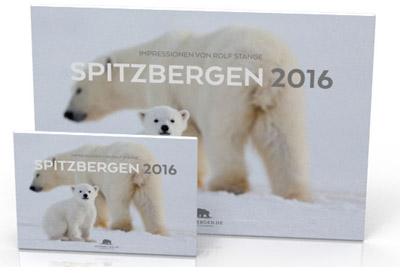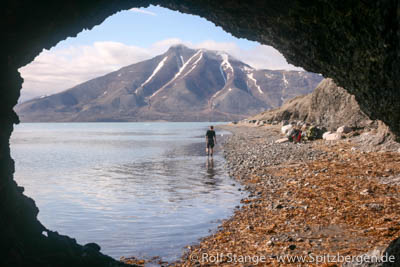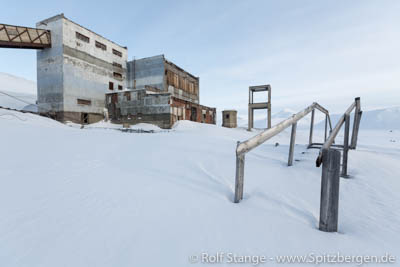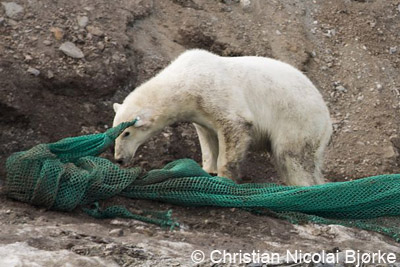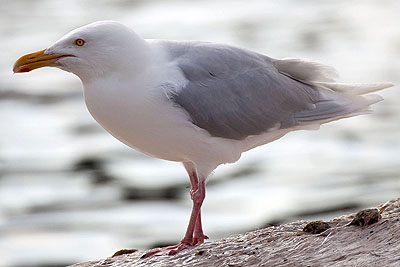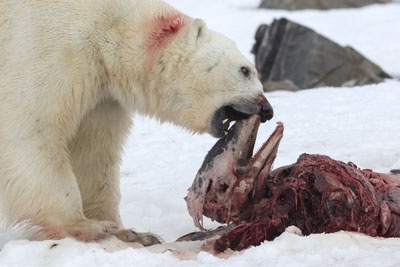-
current
recommendations- Liefdefjord
New page dedicated to one of Spitsbergen's most beautiful fjords. Background information and many photos.
- New Spitsbergen guidebook
The new edition of my Spitsbergen guidebook is out and available now!
- Liefdefjord
New page dedicated to one of Spitsbergen's most beautiful fjords. Background information and many photos.
Page Structure
-
Spitsbergen-News
- Select Month
- May 2025
- April 2025
- March 2025
- February 2025
- January 2025
- December 2024
- November 2024
- October 2024
- September 2024
- August 2024
- July 2024
- June 2024
- May 2024
- April 2024
- March 2024
- February 2024
- January 2024
- December 2023
- November 2023
- October 2023
- September 2023
- August 2023
- July 2023
- June 2023
- May 2023
- April 2023
- March 2023
- February 2023
- January 2023
- December 2022
- November 2022
- October 2022
- September 2022
- August 2022
- July 2022
- June 2022
- May 2022
- April 2022
- March 2022
- February 2022
- January 2022
- December 2021
- November 2021
- October 2021
- September 2021
- August 2021
- July 2021
- June 2021
- May 2021
- April 2021
- March 2021
- February 2021
- January 2021
- December 2020
- November 2020
- October 2020
- September 2020
- August 2020
- July 2020
- June 2020
- May 2020
- April 2020
- March 2020
- February 2020
- January 2020
- December 2019
- November 2019
- October 2019
- September 2019
- August 2019
- July 2019
- June 2019
- May 2019
- April 2019
- March 2019
- February 2019
- January 2019
- December 2018
- November 2018
- October 2018
- September 2018
- August 2018
- July 2018
- June 2018
- May 2018
- April 2018
- March 2018
- February 2018
- January 2018
- December 2017
- November 2017
- October 2017
- September 2017
- August 2017
- July 2017
- June 2017
- May 2017
- April 2017
- March 2017
- February 2017
- January 2017
- December 2016
- November 2016
- October 2016
- September 2016
- August 2016
- July 2016
- June 2016
- May 2016
- April 2016
- March 2016
- February 2016
- January 2016
- December 2015
- November 2015
- October 2015
- September 2015
- August 2015
- July 2015
- June 2015
- May 2015
- April 2015
- March 2015
- February 2015
- January 2015
- December 2014
- November 2014
- October 2014
- September 2014
- August 2014
- July 2014
- June 2014
- May 2014
- April 2014
- March 2014
- February 2014
- January 2014
- December 2013
- November 2013
- October 2013
- September 2013
- August 2013
- July 2013
- June 2013
- May 2013
- April 2013
- March 2013
- February 2013
- January 2013
- December 2012
- November 2012
- October 2012
- September 2012
- August 2012
- July 2012
- June 2012
- May 2012
- April 2012
- March 2012
- February 2012
- January 2012
- December 2011
- November 2011
- October 2011
- September 2011
- August 2011
- May 2011
- April 2011
- March 2011
- February 2011
- January 2011
- December 2010
- November 2010
- September 2010
- August 2010
- July 2010
- June 2010
- May 2010
- April 2010
- March 2010
- February 2010
- November 2009
- October 2009
- August 2009
- July 2009
- June 2009
- May 2009
- April 2009
- March 2009
- February 2009
- January 2009
- December 2008
- November 2008
- October 2008
- August 2008
- July 2008
- June 2008
- May 2008
- April 2008
- March 2008
- February 2008
- April 2000
- Select Month
-
weather information
-
Newsletter

| Guidebook: Spitsbergen-Svalbard |
Home →
Yearly Archives: 2015 − News
Polar bear mother with 3 cubs has lost 2 of them
In May 2015, a polar bear family with 3 cubs has been observed in Tempelfjord and Billefjord (click here for May article on this website).
Triplets are very rare, twins are normal. The female in question, did, however, not have triplets for the first time: in april 2011, she had already been caught, sedated and examined by scientists on the east coast of Spitsbergen, when she had triplets. Back then, only one of three cubs survived in the end.
In spring 2015, the female was caught and sedated again. At that time, her 3 cubs were so small that they were not sedated, but they were present during the examination of their mother. According to data from the satellite transmitter on the collar that was attached to the female on the occasion, the family then started a remarkable journey northwards to spend the summer north of Nordaustland. Later, they returned south again, crossing Nordaustland, Hinlopen Strait and northeastern Spitsbergen to return to Tempelfjord, where the female was recently seen. Only one cub was still with her, the other two are apparently lost. It is not known when and how they died, but it is common that mother polar bears lose part of their offspring during the first summer or later. Access to food can be difficult, and competition between the cubs can be strong then.
Polar bear family in Billefjord, April 2015.
Source: Svalbardposten (41/2015)
Election of the new City Council (Lokalstyre) in Longyearbyen
Sunday the 4th and Monday the 5th of October were election days in Longyearbyen. For the upcoming four years the 15 members of the new City Council (Lokalstyre) were elected. The City Council is the supreme organ of the local government in Longyearbyen. 1651 electorates were entitled to vote, having the choice between four parties and their candidates. The counting of votes led to the following preliminary result:
| Party | Result in % | Seats | |
| Arbeiderpartiet | (Ap, social democratic) | 34.6 | 5 |
| Høyre | (H, conservative, economic liberal) | 29.7 | 5 |
| Venstre | (V, social-liberal) | 21.0 | 3 |
| Miljøpartiet De Grønne | (MDG, environmental party, social-liberal) | 13.5 | 2 |
1006 valid votes were cast, according to a voter participation of 60.93 % (2011: 56.56 %). For the calculation of the seats, both the votes for the single candidates and for the parties in total are relevant.
For the Arbeiderpartiet this result is a setback. With 7 seats so far it was the strongest party in the present City Council providing the head of the local government in Longyearbyen, Christin Kristoffersen. Even in the recent survey from September the Arbeiderpartiet was clearly ahead with 56.5 % of the votes and 9 seats. Here the Høyre achieved only 21 % (3 seats), the Venstre 12.9 % (2 seats) and the green MDG 9.7 % (1 seat). However, 45 % of the respondents answered that they still were undecided, would not vote or didn´t want to answer. Kristoffersen had announced earlier that she would not candidate again for another period. This time Arild Olsen is top candidate of the Arbeiderpartiet.
The Høyre had 3 seats in the Council so far and was the 2nd strongest party after the Arbeiderpartiet. Now the Conservatives are seeing an opportunity to define the politics of the upcoming four years in Longyearbyen in a coalition with the Venstre and to install their top canditade Torgeir Prytz as head of the local government. Both parties already announced the intention to go into coalition negotiations. Together they would have a majority of 1 seat in the Council. Such a coalition might sound strange outside of Norway (Høyre means ‚right-wing‘ and Venstre ‚left-wing‘). But in the Norwegian political landscape these two parties are not too far away from each other (see above, Venstre is not a socialist or communist party as the name might suggest).
Venstre and the green MDG were not represented in the City Council before. Especially for the MDG the representation in the Council is a significant success. With 13.5 % of the votes and 2 seats in the Council the group in Longyearbyen would be the most successful group of the environmental party in whole Norway so far. The top candidate of the MDG Helga Bårdsdatter Kristiansen already promised an active opposition policy.
Longyearbyen is now getting a new city council (Lokalstyre). A lot is changing currently in the little city.
Source: Lokalstyre, Svalbardposten
Drastic downscaling of coal mining industry
The low coal prices on the world market make life even more difficult than expected for the Norwegian mining company Store Norske Spitsbergen Kulkompani (SNSK). Already in spring, the Norwegian government, which is owning almost all shares, had to help the SNSK out of trouble with a loan. Due to the dramatic situation, the management has decided to take some drastic steps:
- The production in the mines at Sveagruva (Svea Nord and the new mine in Lunckefjellet) will be stopped. A minimum crew of about 50 miners will ensure maintainance to keep the option of future production available.
- If the coal prices do not recover until 2019, the mines at Sveagruva will be closed.
- The production in the smaller mine 7 near Longyearbyen will be increased. 45 miners (until now 24) are supposed to produce 155,000 tons per year (currently 70,000) .
- Further occurrences near mine 7 will be prepared for mining to ensure a production period of at least 10 years.
- The administration will be downsized.
The maintainance mode in Sveagruva will require an annual budget of 95 million Norwegian Kroner, which will have to come from the owner (the goverment), according to the plans of the management. Negotiations with the government are started immediately.
Altogether, the number of jobs in Longyearbyen and Sveagruva will be decreased by 150. Together with those jobs already lost recently, the number of employees is downsized by 150 within 18 months.
Many people in Longyearbyen are worried now about the future. A lot of jobs in many companies still depend on mining, and the fear is there that a massive downscaling of the coal industry and related economy would have a major negative impact on the local economy and society. The political debate about the future economical structure of Longyearbyen has started. One of the measures to fight the economical problems is the envisaged increase of the harbour facilities.
Facing a dark future: miner in Longyearbyen.
Source: Svalbardposten (36/2015)
Haudegen station under repair
The famous Haudegen-station in the remote Rijpfjord on the north coast of Nordaustland was a German military weather station from the Second World War. The soldiers who manned the Haudegen station were not picked up before September 1945 and they were the last unit of the Wehrmacht (German military during the war) which surrendered officially (and very happily) on this occasion. Rumors that they had simply been forgotten are wrong: they had constantly been in touch with Norway after the end of the war, both about their pickup and for sending weather data to the meteorological network.
Since then, the building of the Haudegen-station has been decaying. It is the only war weather station in the arctic that still has a standing building, but the so-called “hard paper hut” has suffered strongly from 70 years of arctic weather. Meltwater seeping through the roof was a menace already in spring 1945, and the moisture has not done the building any good since. As a reaction, access to the hut and its nearest surroundings was closed in 2010. Per Kyrre Reimert, then archeologist at the Sysselmannen, said that due to a lack of resources to repair the house, closing it was the only alternative.
In August 2015, major repair work was done on Haudegen station for the first time since 1945. A team of craftsmen from the Sysselmannen was there to start the project. A small temporary hut was established for accommodation. The Haudegen station has got a new roof which is supposed to protect the building from moisture. Further work remains to be done, but no more details are known at the time of writing.
The Haudegen-station in August 2015 with a new roof.
Memory card lost in Spitsbergen in 2009 now found
Photos can survive for a long time in the ice. In 1930, film material from the Swedish Andrée expedition was found on Kvitøya, where the three members had got marooned and died in 1897. A sensation after 33 years.
A bit less sensational, but nevertheless remarkable is the story of a digital memory card that was found in Spitsbergen in August this year. It contains more than 1200 photos, taken with an Olympus camera. The files seem to be fine after 6 years in the arctic. The photos were taken during a trip with the sailing boat Noorderlicht in early July 2009.
But the story still needs a happy end, as the memory card has not yet found its way back to the owner. He or she is possibly on the photo that is shown below. Who knows this woman? We would like to help to get the card back to the owner. Please let us know in case you know anything of interest (click here to get in touch).
Likely the owner of a memory card that was lost in Spitsbergen in 2009 and found now in August.
The Swede Andrée in late July 1897 in the ice. His expedition got lost, the remains including photos (Kodak film material) were found on Kvitøya only in 1930.
Spitsbergen calendar 2016 available
The Spitsbergen calendar 2016 is available from now on in two sizes (A3 and A5). Twelve beautiful photos bring Spitsbergen’s scenery and wildlife throughout the arctic seasons onto your wall. Click here for further information about the new Spitsbergen calendar 2016.
Der Spitzbergen-Kalender 2016 ist ab sofort wie gewohnt in den Formaten A3 und A5 erhältlich. Zwölf schöne Fotos bringen Spitzbergens Landschaften und Tiere durch die Jahreszeiten auf die Wand. Der Spitzbergen-Kalender 2016 ist hier bestellbar.
The new Spitsbergen calendar 2016.
Mild summer in Spitsbergen
According to weather data of the Norwegian Meteorological Institute, the current summer month August is the warmest of its kind since the beginning of measurements in the 1970s at the airport near Longyearbyen. The normal average temperature in August is 4.8°C. The corresponding value for 2015 will be between 6.6 and 6.8°C (the final value is not yet available).
Longyearbyen has not had summer temperatures on this average level at least since the 1970s. And indeed, parts of August were real summer in Longyearbyen, with temperatures up to around 16°C in cases. People were enjoying the outside tables of the cafés and restaurants and their own homes.
Sometimes, the warm temperatures were more of a local character: while it was more than 16°C in Longyearbyen, it was pleasantly cool (4-5°C) at Kapp Lee on Edgeøya. Altogether, however, weather data from other stations (Ny Ålesund, Isfjord Radio, Barentsburg) indicate a very mild summer also elsewhere in the region.
Locals are more worried about warmer winters than warmer summers. The winter cold is important for the fjord ice. Also shrinking glaciers already make for very obvious changes in the landscape.
Summer weather in Isfjord.
Source: NRK
Smoldering fire at cultural heritage in Colesbukta
Almost two weeks ago a team of the Sysselmannen started extinguishing a subterranean fire in Colesbukta caused by a camp fire. The fire was ignited at the foundation of a historical building which is protected as a listed monument. In Colesbukta several buildings from the time between 1913 and 1962 are preserved. They served as a harbor where coal from the nearby Russian mining settlement Grumantbyen was loaded. Both settlements are cultural heritages.
On Tuesday 13th of August the Sysselmannen was informed by tourists about the fire in Colesbukta and a team was sent by helicopter. The original camp fire was already extinguished but it had initiated a smoldering fire under the ground which was about to spread. First the Sysselmannen´s team prevented the fire from spreading by digging a trench and the cultural heritage could be saved.
As now, almost two weeks later on Tuesday 25th of August the Sysselmannen and the fire department examined the place again, they noticed that the fire was still smoldering. The fire fighters tried to extinguish it with foam and now they think about using a several meters long hose for pumping water from the coast to the fire area.
As it is prohibited in Svalbard to make a fire close to cultural heritages, the Sysselmannen is investigating in this case. So far it is not known who made the camp fire. The Sysselmannen asks for information, preferably from the responsible persons themselves.
The old mining/harbour settlement Colesbukta in winter.
Source: Svalbardposten
Nordaustland circumnavigated by sea kayakers
The main island of Spitsbergen has been circumnavigated by sea kayakers already in 1990. But the second-largest island, Nordaustland, has so far withstood all attempts. Not that there have been a lot, but there were a few, which never really took off due to heavy ice conditions.
Next to difficult ice and weather conditions, it is the long ice cliff of the ice cap Austfonna on the east and south coast of Nordaustland, which makes any attempt to kayak this coast a very demanding venture. The calving glacier front is about 160 kilometres long and does not afford any opportunity to land for a rest or to sit out bad weather.
This summer, two groups have been successful with their attempts to circumnavigate Nordaustland. The Norwegian group “Nordaustland” reached Kinnvika on August 14, where they had started their kayaking expedition. A cruise ship provided safe and comfortable transportation from Longyearbyen to Kinnvika and back, the goal of the expedition was kayaking around Nordaustland and this has been achieved. Congratulations!
But “Nordaustland 2015” were not the first group. Just about one day before, a group of three kayakers, two from New Zealand and one from Norway, had completed their kayak-circumnavigation of Nordaustland successfully. Congratulations also to this group! But they have not yet completed their expedition, as it is their ambitious plan to circumnavigate the whole archipelago, from Longyearbyen to Longyearbyen. But they have done the largest step, Nordaustland, with impressive success.
Both groups met on the way, kept good contact and supported each other with information. “Nordaustland 2015” wrote in their blog “If we reckon that Nordaustlandet is 800 million years old, 24 hours difference is insignificant.” Only a quibbler would challenge this 🙂
Both groups have made an amazing achievement with years of preparation and training. The New Zealand-Norwegian group completed the 160 kilometer ice cliff coast within 40 hours without any major rests. Camping on Isisøyane (earlier called Isispynten) was not possible because of the presence of a number of polar bears. Vibebukta was the next place where putting up a tent was an option. Drift ice and fog slowed the trip down. Fridtjof Nansen, who in 1895 and 1896 made an incredible kajak adventure north of and within Franz Josef Land together with Hjalmar Johansen during his Fram Expedition, would be impressed.
Glacier front on the south coast of Nordaustland behind dense drift ice, July 2015.
Sources: Nordaustland 2015 (Facebook), Ice bears and Islands
Sysselmannen removes garbage from Svalbard´s beaches
This year an amount of 101 cubic meters of garbage was collected on the Sysselmannen´s annual cleanup cruise to remote beaches in Svalbard. The Sysselmannen´s ship ‘Polarsyssel’ was operating for eight days, approaching three places at the west- and the north coast of the main island Spitsbergen and two places in the northwest of the island Nordaustlandet. 24 volunteers supported the Sysselmannen´s crew in cleaning the single coastlines from garbage that was washed ashore.
It is most of all plastic garbage of different kind and size from all over the world which floats on the ocean´s surface, sometimes for years, and finally finds its way to the coast. And the bigger part derives from the fishing industry: fishnets, fishnet floats, ropes and so on. For animals the garbage can turn into a lethal trap, in the water as well as ashore. Seabirds for example swallow small pieces of plastic which they are not able to digest. They finally die by the accumulation of plastic pieces in their stomachs. Birds and other animals get entangled in ropes and fishnets. On this year´s campaign the Sysselmannen´s crew found a reindeer skeleton completely wrapped in a fishnet and in 2014 a polar bear was trailing a huge fishnet with its ear. The net got stuck at an earmark placed by scientists (see also Spitsbergen-Svalbard.com news Again polar bear caught in fishing net from August 2014).
With 101 cubic meters there was more garbage collected than last year (88 cubic meters). Yet, the Sysselmannen´s cleanup cruise was not as successful as expected. In the beginning the work was two times disturbed by polar bears showing up and later bad weather prevented the approach to highly polluted beaches. Special thanks go to the local population with its willingness to support the campaign. More than 200 locals volunteered for the cleanup and finally 24 were chosen to accompany the Sysselmannen´s crew.
Generally, the Sysselmannen can only cover a very small part of Svalbard´s coasts with this annual campaign, as for example this year there were only five beaches cleaned. Therefore smaller private expedition cruise ships are a significant help in this case, as most of them constantly arrange similar cleanups with their passengers (see also Spitsbergen-Svalbard.com news The Ocean Cleanup: solution for the global plastic pollution problem from June 2014).
Fishnet washed ashore
© Christian Nicolai Bjørke
Source: Sysselmannen, Svalbardposten
UN Secretary-General Ban Ki-moon is visiting Svalbard
United Nations Secretary-General Ban Ki-moon is currently on an official trip in Svalbard. The visit is part of the UN´s campain in preperation of the upcoming UN Climate Change Convention in December 2015. Ban intends to get an overview over the local effects of global warming in the Arctic and to use the publicity of his visit to primarily inform about the alarming extend of glacial melting.
On Tuesday Ban arrived at the airport in Longyearbyen, accompanied by the Norwegian Foreign Minister Børge Brede. The guests were directly taken to the Norwegian research vessel ‘Lance’, which had recently returned from a research operation in the ice, north of Svalbard. Onboard the ‘Lance’ they were brought to Ny-Ålesund where scientists of the Norwegian Polar Institute informed Ban about the situation in Svalbard. Afterwards they took a boat trip to the edge of the glacier Blomstrandbreen, which had melted significantly since Ban’s last visit in 2009. The next stop on the tour is again Longyearbyen.
Ban Ki-moon,
CC BY-SA 2.0 by
Ministerie van Buitenlandse Zaken
Source: United Nations
Glaucous gulls: The population in Svalbard is under pressure
Researchers of the Norwegian Polar Institute reported about a significant decline of the glaucous gull population on Bear Island, the most important breeding area for glaucous gulls in Svalbard and the Barents Sea. During the past few decades a permanent decline of the population was recognized on the island. An extended monitoring shall now find out if this trend can be confirmed for other regions of Svalbard.
Besides factors like food shortage and climatic changes the reason for the decline is more and more seen in the bird´s increasing contamination with environmental toxins (heavy metals, PCBs, fluorine, …). The birds receive environmental toxins with their food and accumulate them for example in their brains and livers where they affect the animal´s health. On Bear Island continuously dead and dying birds with a high contamination were found. In previous studies Norwegian researchers found out that glaucous gulls with a low contamination survived with a relatively high rate of 91.5 % while only 40-50% of those with a high contamination survived the current season (see also Spitsbergen-Svalbard.com news Glaucous gulls threatened by environmental toxins from March 2012). As predators, standing at the top of the food chain, glaucous gulls also give a good indication for the condition of the ecosystem they live in.
On the Norwegian Red List of Threatened Species the glaucous gull population in Svalbard is currently listed as ‘near threatened’ (‘nær truet’). If the alarming trend on Bear Island will be confirmed for the whole of Svalbard, the status might be upgraded to ‘endangered’ (‘truet’). Observations in Iceland and Canada also documented a significant decline of the glaucous gull population while the population in Greenland, Alaska and Russia seems to be stable. But for these areas, and especially for Russia, the database is not sufficient.
Glaucous gull in Spitsbergen, the population ist under pressure.
Source: Norsk Polarinstitutt
Polar bear eats dolphin: normal or not?
Photos are currently circulating in media that show how a polar bear is eating the carcass of a White-beaked dolphin. Both articles and comments that come with these photos are reason for some extended comments on the event.
The first observation was made in April 2014 by Jon Aars, polar bear researcher in the Norwegian Polar Institute, and his scientists, in Raudfjord, where they found a polar bear that was eating a dead White-beaked dolphin. They had not observed how exactly the dolphin had died. In the following time up to the summer, several other bears were seen eating more dolphins, but all further observations relate to the same event in the same area.
White-beaked dolphins are common in the Barents Sea including Spitsbergen waters, but tend to stay at open sea, away from coastal waters, and are accordingly not often seen. This contributes to the widely believed impression that there are no dolphins in the Arctic. This is not true. The statement that their “sudden” presence there has to be linked to climate change is obviously wrong, they have been there already for a long time, without any link to the present climate change. There are, however, observations of White-beaked dolphins in fjords.
It is safe to assume that a group of White-beaked dolphins was trapped by drift ice in Raudfjord that was blown in there by northerly winds during the days before the first observation was made. Inside the fjord, the dolphins were forced to surface regularly at small holes in the ice to breath. There, they are easy prey for polar bears, who often hunt seals in a very similar way. Polar bears can kill seals instantly by hitting them with the paw or biting them into the head. There is now reason why they should not be able to do the same with dolphins, which are of similar size, once they are forced to surface in ice similarly to seals.
Polar bears are very well known as opportunistic feeders, which means they will eat almost anything they come across as long as they can get it down. It is no surprise that they take dolphins when they can get hold of them. It would actually be very strange if they didn’t.
It is certainly true that polar bears do usually not eat dolphins. This is due to the simple fact that dolphins normally stay in open water, where polar bears are not able to catch them.
If it is now stated that polar bears, who can’t hunt their usual prey (seals) now because of climate change, are forced to change to dolphins, which – again due to climate change – have moved further north, there are obviously several very difficult, if not plainly wrong, assumptions involved. The observation rather means that man has not yet seen everything that occasionally happens in nature, especially in very remote areas in difficult seasons and with animals which are very difficult to follow. Especially when it comes to quite rare events.
Polar bear scientist Jon Aars is quoted saying that White-beaked dolphins may become an important food source for a smaller number of specialized polar bears. This lacks an explanation how these specialized hunters should get hold of those dolphins on a more or less regular basis, at least more than during a once in a lifetime occasion due to rare circumstances. Considering this and the fact that this is, so far, based on only one observed event, it seems a somewhat far-reaching hypothesis. (There is a number of photos taken on several opportunities, but all of them show the same group of polar bears feeding on the same group of dead dolphins in the same area).
Conclusion: this is certainly a rare event and an even more rare observation, which is, however, by no means necessarily linked to climate change, but due to an unusual constellation of circumstances.
A polar bear feeding on a White-beaked dolphin. Northwest Spitsbergen, July 2014 © Samuel Blanc.
Source: Polarresearch.net
Noorderlicht: last season as “ship in the ice”
SV Noorderlicht, the two mast sailing ship originally built in Germany as fireship Kalkgrund and in Dutch ownership a regular and beautiful sight in Spitsbergen waters for many years now, is known to many as the “ship in the ice”.
When the ice settled in Tempelfjord, Noorderlicht was parked there and frozen in intentionally. As soon as the ice was strong enough, the ship could be visited and tourists could spend a night on a ship in the ice, to enjoy an atmosphere that reminded one of Nansen’s ship Fram during her great ice drift across the arctic ocean in 1893-1896. A bit shorter and less dangerous, but the feeling was there. Noorderlicht‘s first season as ship in the ice was in 2002, and since then, near 7000 overnight guests have enjoyed this unique experience. Due to permit restrictions, the ship was not open for individual tourists, but only those who came as organized groups with guides. It was often visited by groups who came by dog sledge.
The Noorderlicht crew has the desire to explore something new and has scheduled sailing in north Norway in the spring 2016, so the ship will not be back in Tempelfjord.
The tour operator behind the ship in the ice concept, Basecamp Spitsbergen, is now looking of an alternative, so the story of the ship in the ice may continue with another vessel. It will, however, be difficult to replace Noorderlicht.
Click here for some 360 degree panoramas from Noorderlicht as “ship in the ice”.
Noorderlicht as “ship in the ice” in Tempelfjord.
Source: Svalbardposten (22/2015)
Longyearbyen airport: running out of fuel
The airport at Longyearbyen, Svalbard lufthavn, is running out of fuel. New kerosine is ordered and coming up by ship, but this takes some time. Meanwhile, fuel is rationed. Police and rescue services have got priority, while airlines are asked to refuel in mainland Norway as much as possible.
As a result, direct flights from Longyearbyen to Oslo may be forced to make an extra stop in Tromsø for refuelling, which results in delayed arrivals, as this author painfully experienced last week.
The supply ship is to come next week, and then all planes can refuel again in Longyearbyen.
A kingdom for a jerrycan! Svalbard lufthavn is running out of fuel.
Quelle: NRK
News-Listing live generated at 2025/May/09 at 04:46:38 Uhr (GMT+1)
